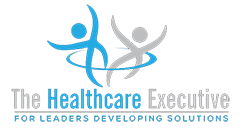Mastering Change Management in Healthcare: Essential Leadership Strategies for 2024

Mastering Change Management in Healthcare: Essential Leadership Strategies for 2024
Introduction
Change management is a high-level competency for healthcare leaders, especially as the industry faces ongoing transformations such as technological advancements, regulatory updates, and evolving patient needs. In 2024, effectively leading change will be more important than ever to ensure that healthcare organizations not only adapt to new challenges but also thrive. This blog explores essential strategies that healthcare executives can employ to master change management within their organizations.
The Importance of Effective Change Management
Successful change management involves guiding and supporting an organization and its personnel through transitions, minimizing disruptions while maximizing the adoption and efficiency of new processes, technologies, or ideas. Effective change management can lead to improved patient care, enhanced operational efficiency, and increased employee satisfaction.
Strategies for Leading Change in Healthcare:
- Clearly Define the Change and Its Impact:
- Articulate what is changing, why it is necessary, and how it will impact both the organization and its stakeholders. Clear communication prevents misinformation and manages expectations effectively.
- Engage Stakeholders Early and Often:
- Involve key stakeholders, including clinical staff, administrative teams, and patients, in the change process from the beginning. Their input can provide valuable insights and help tailor the change strategy to meet diverse needs.
- Build a Strong Change Leadership Team:
- Assemble a dedicated team responsible for driving the change. This team should represent a cross-section of your organization to ensure that all perspectives are considered and addressed.
- Invest in Training and Education:
- Provide comprehensive training and educational resources to all affected by the change. Ensuring that everyone understands new systems, processes, or policies is essential for smooth implementation.
- Use Data to Support Decision Making:
- Leverage data to monitor the progress and impact of changes. Data-driven insights can help you adjust strategies in real-time, improving outcomes and demonstrating the benefits of the change to all stakeholders.
- Foster an Organizational Culture Open to Change:
- Cultivate a culture that views change positively and as an opportunity for improvement. Recognition programs, incentives, and open communication can help reinforce this mindset.
- Implement Change in Phases:
- Roll out changes in manageable phases rather than all at once. This phased approach allows for adjustments based on feedback and helps staff adapt more easily.
- Monitor and Evaluate the Change Process:
- Continuously evaluate the effectiveness of the change initiatives. This ongoing assessment helps identify areas for improvement and success stories that can be celebrated and built upon.
Challenges in Change Management:
- Resistance to Change: Resistance from employees, especially in large or traditional organizations, can hinder change efforts. Addressing concerns directly and making adaptations to alleviate fears can help.
- Resource Allocation: Adequate resources, including time, personnel, and finances, must be allocated to support change initiatives.
- Sustaining Change: Ensuring that changes are embedded into the organization’s practices and culture for the long term requires persistent effort and reinforcement.
Conclusion
Mastering change management is essential for healthcare leaders aiming to navigate the complexities of the industry in 2024. By implementing these strategic approaches, healthcare executives can lead their organizations through successful transformations, resulting in more efficient, effective, and patient-centered care.
Call to Action
Healthcare leaders should begin by assessing their current change management practices and identify areas where these strategies can be integrated. Building a strong foundation of communication, stakeholder engagement, and data utilization will be key to navigating future changes effectively.



